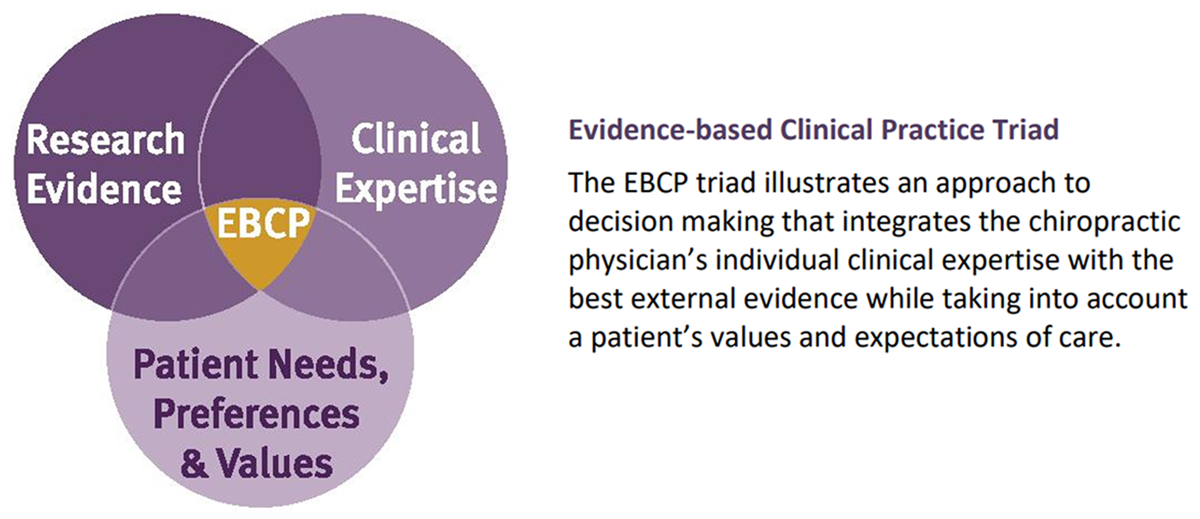Sophisticated Research Design in Chiropractic and Manipulative Therapy;
“What You Learn Depends on How You Ask.”
Part A. Quantitative Research: Size Does Matter
SOURCE: Chiropractic Journal of Australia 2016; 44 (2): 1–21
Lyndon G. Amorin-Woods, BAppSci(Chiropractic), MPH
Murdoch University Chiropractic Clinic
School of Health Professions,
Discipline of Chiropractic
Murdoch University South Street campus,
90 South Street, Murdoch,
Western Australia 6150
| Enjoy Part 2: Qualitative Research: Quality vs. Quantity Enjoy Part 3: Mixed Methods: “Why Can’t Science And Chiropractic Just Be Friends?” |
Many chiropractors remain skeptical of evidence-based practice (EBP) and some may view it as an attack on the profession which they feel must be resisted. A counter-argument is centred on the primacy afforded quantitative methodology as epitomised by the randomised controlled trial (RCT). This defensive posture may be mitigated by recognising the role complex research has played in the legitimisation of the profession. The pre-eminence of the randomised controlled trial (RCT), considered by many as the gold-standard of evidence, has led some authors to go so far as to functionally disregard all evidence that is not an RCT. However, it is readily apparent the RCT is not always the most appropriate study design to gather evidence, especially in the CAM health sector. This paper discusses the role of sophisticated design in quantitative chiropractic research, presenting examples sequentially through the traditional quantitative hierarchy and concludes that optimal methodology depends on the research question. Research design must allow for the various dimensions of the (chiropractic) clinical encounter, and may be sophisticated at all levels, but must above all, be contextual. The ‘best available’ or most relevant evidence depends on what one needs for a specific purpose. A critical caution is the proviso that care must be exercised not to draw inappropriate conclusions such as causation from descriptive studies.
INDEX TERMS: Chiropractic; Evidence-Based Practice; Quantitative Evaluation; Research Design
INTRODUCTION
Proponents and detractors of evidence-based practice (EBP) in chiropractic, in common with the rest of healthcare, generally adopt antithetical positions characterised more by dogmatic convictions than by genuine debate. Some consider RCT evidence as the gold standard of sophisticated evidence, while others are highly critical. [1] The principal proposition of this paper will be that sophisticated research designs have an important role in generating new knowledge at all ‘levels’ of the hierarchy and should not be avoided because of the challenge presented by complexity. It is my view that a sequential analysis of the various study designs in clinical and health system research demonstrates that different designs have each added a unique dimension to the corpus of knowledge concerning chiropractic, manual therapy, spinal pain complementary medicine and human well-being. A study may reside ‘lower’ on the evidentiary hierarchy, but this certainly does not preclude it from being complex, sophisticated or valuable.
It is pertinent to acknowledge that the very delineation of evidence into strata, a so-called hierarchy, has itself been extensively critiqued; for example Goldberg observed EBM’s rigid hierarchy of evidence to be “the culprit of its objectionable epistemic practices”. [2] Of late, the re-emerging stature of qualitative research mirrors the journey of science and philosophy through significant paradigms or worldviews, including; positivist, post-positivist, critical theory, constructivist and participatory/advocacy. [3] Quantum physics and complexity theory further add to the recognition that science, and especially health science, is still subject to the dictum; “absence of proof does not equal proof of absence.”
Read the rest of this Full Text article now!






Leave A Comment